Kilkenny Castle was built in the Republic of Ireland in 1195 by William Marshal, 1st Earl of Pembroke. Its purpose was to control a fording-point of the River Nore plus the junction of several route ways. It was a symbol of Norman occupation and in its original thirteenth-century condition it would have been an important defense structure to protect the town. It was roughly a square shape with four large corner towers connected by curtain wall. A further defense was the construction of a massive ditch beyond the outside walls. Remain of the ditch, which was a dry moat can be seen today on the right of the gates at/on the Parade. The entrance near the Parade Tower has nineteenth-century cast iron gates that came originally from Saint Stephen's Green in Dublin.
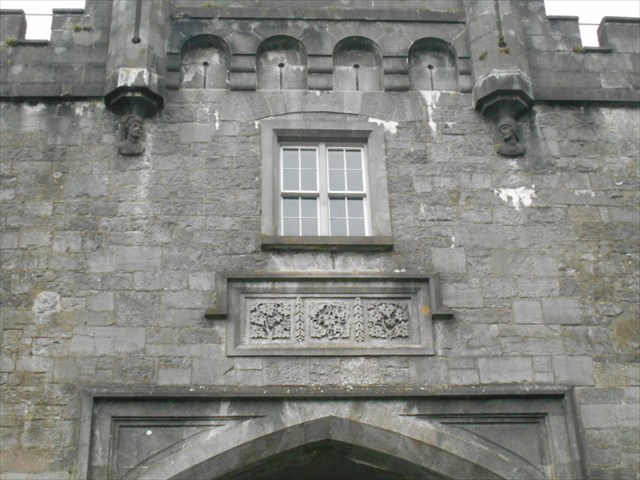
EARLY YEARS: It was a Strongbow construction initially and was, in all liklihood a wooden fortress completed in the 12th century. the first stone version followed soon afterwards in the early part of the 13th century. This was a square-shaped castle with towers at each corner; three of these original four towers survive to this day. The demolition of the square tower and other buildings on the eastern side (nearest the river) took place in the 1700's
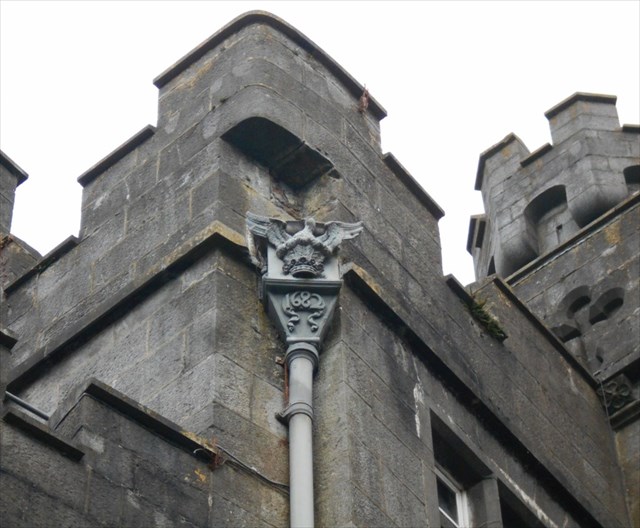
The property was transferred to the people of Kilkenny in 1967 for £50 and the castle and grounds are now managed by the Office of Public Works. Many of the original feature remain including these ornately decorated drainpipes which are dated from centuries ago. The gardens and parkland adjoining the castle are open to the public. The Parade Tower is now a conference venue. Awards and conferring ceremonies of the graduates of Kilkenny Campus of National University of Ireland, Maynooth have been held in the glorious castle grounds since 2002.
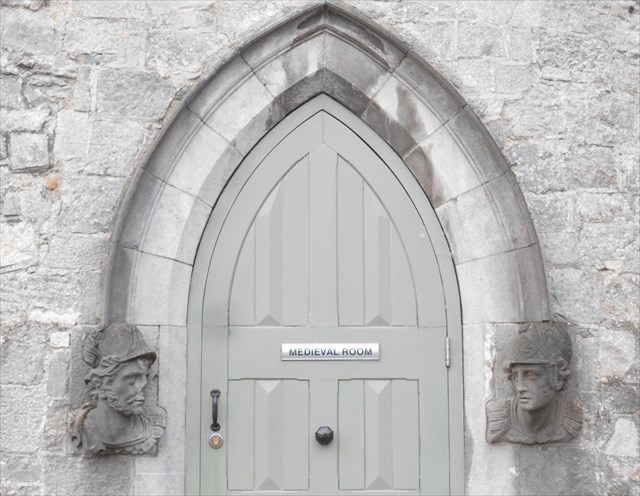
The entrance that we see today was created over 300 years ago and the stone used came from the Black Quarry but this Anglo-Norman stone castle goes back as far as the late 12th century. The structure of Kilkenny Castle today a complex one of various architectural styles.
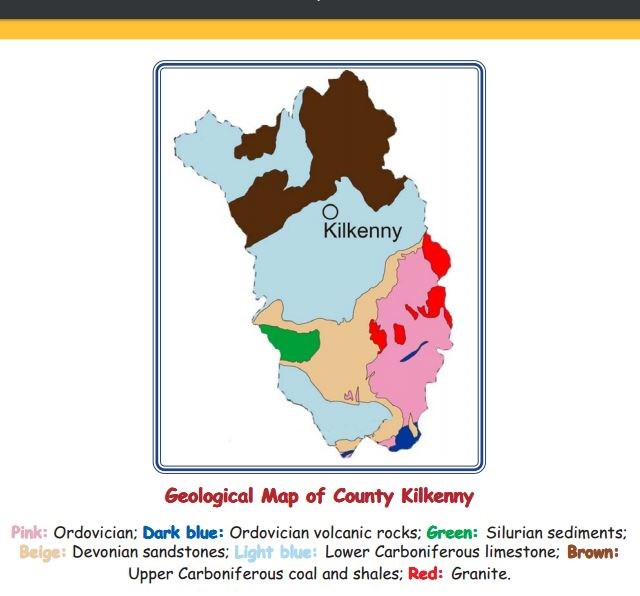 Image courtesy of http://geoschol.com/counties/KILKENNY_GEOLOGY.pdf
Image courtesy of http://geoschol.com/counties/KILKENNY_GEOLOGY.pdf
The Geology
Kilkenny is known as the Marble City and it many quarries produce marble and limestone of different colours. Limestone is a natural material of unique beauty, inherent durability and versatility. It is often used in architectural applications, particularly in lintels, monuments and outdoor sculptures. Limestones vary, but generally speaking Limestone produced in Ireland is extremely hard and durable, having been formed about 360,000,000 years ago on the floor of a coastal sea when Ireland would have been considered a **tropical region. Long term pressurization in the earth transformed sedimentary rock into tough, fine-grained grey-bluey/black limestone with calcite veins and crystalline fossils.
The fossils
The palette of colours are identified as Irish Blue, Grey, and Fossil Limestone, since they range from black to blue to grey and often display well-defined fossils of sea shells, corals and prehistoric sea plants. The fossils in the dark Kilkenny buildings are enhanced because of the dramatic whiteness against the darker matrix of the stone.
Kilkenny fossils
The most commonly found fossils are brachiopods, corals, snails and crinoids.
Brachiopods are a type of shellfish (common name is ‘lamp shells’) and lived at the bottom of the sea and were anchored there by a long stalk-like ligament. They survived on plankton. Their appearance in the rock looks like a double circle, one within the other but because the ligament disintegrates before the rock formation the binding of the two circles is lost and you may only see single circles remaining.
Corals live in colonies and depending upon the way the stone is cut they can appear as white spots or when viewed from the side as longer shapes similar to pencils.
Crinoids are similar to a stack of washers. Held together in life but in the rock they can look like spilled washers as the ligaments have gone and the creature disintegrates.
Snail fossils look like snail shells, giving the appearance of curled spirals
Triangulation Pillars - measuring references
Trigpoints are the common name for "triangulation pillars" or "points". These are concrete pillars, about 4' tall, which were used by the Ordinance Survey in order to determine the exact shape of the country.
They are generally located on the highest bit of ground in the area, so that there is a direct line of sight from one to the next. By sitting a theodolite (an accurate protractor built into a telescope) on the top of the pillar, accurate angles between pairs of nearby trigpoints could be measured. This process is called "triangulation".The network of triangulation pillars, with accurately known positions, led to the excellent OS maps which we enjoy today. The coordinate system used on these maps is known as the "National Grid".
The modern era - GPS Nowadays, most of the monuments described above have fallen into disuse. However a number of the old triangulation pillars and FBMs, along with various newly installed bolts and rivets, now form the "Passive Station" network. This is a set of around 1000 locations which have been accurately measured using GPS (Global Positioning System) technology. Kilkenny Castle is a prominent feature on the Kilkenny landscape and features one point of triangulation as can be seen in the image below.
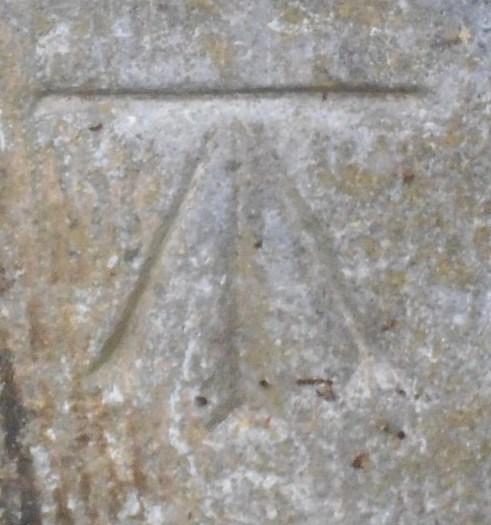
**Ireland's highest officially recognised air temperature, 33.3 °C (91.9 °F), was measured at Kilkenny Castle on 26 June 1887
------------------------------------------------------------------------------------
**Firstly you must visit Kilkenny Castle, going to the main gate or entrance. Please send (to my geocaching.com email account) the answers to the following questions:-
1.) Examine the stonework around the gates, looking for fossils on the left and right columns and describe their shape, size and whatever you think made them? Minimum required is 2 fossil types, one from each side of the gateway. What stone type is used for the gate archway?
2.) Find a trig point shown (its near the gate) and immediately above it you will find a large fossil, estimate its size, describing its shape, and explain what it is. What stone type contains this fossil?
3.) The railings outside the Castle are embedded into which stone type? Is this the same stone as the one used for the Trig point. What fossils are contained within this stone?
------------------------------------------------------------------------------------
Continuing your visit to Kilkenny Castle
After visit the Main Entrance you may wish to explore the other features of this amazing castle including the Parade Tower, Rose Garden, Picture Gallery, Sallyport and Moat and Servants entrance. On the west side of the castle a formal garden with axial paths radiating from a central fountain retains much of the basic form that could have been there during the ducal period. The existing fountain is probably the base of an original seventeenth century water feature.
Two lead statues stand on pedestals near the castle: one is of Hermes after the original in the Vatican Collection, and the other is of Diana the Huntress. All of the garden features, including the terracing, have been recently restored too.
You may log the cache immediately upon visiting the Castle but logs made ‘without’ sending the correct answers to my geocaching.com email account will be deleted!
**Congratulations to 'Du&Ich1804' for FTF**